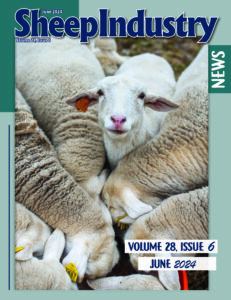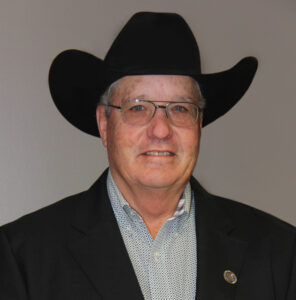CHARTER MEMBERS
John & Nina Baucus, Sieben Ranch – MT
Brad & Laurie Boner – WY
Ryan Boner, M Diamond Angus – WY
Stan & Ann Boyd, Boyd Livestock Services – ID
Robert & Becky Boylan, Boylan Ranch – SD
J. Paul & Debbie Brown, Reata Ranch – CO
Peter & Jackie Camino, Camino & Son – WY
Jeanne Carver, Shaniko Wool Company – OR
Colorado Wool Growers Association – CO
Mike & Jennifer Corn, Roswell Wool – NM
John & Mary Eagle, Eagle Suffolks – ID
Ben & Stella Elgorriaga, Elgorriaga Livestock – CA
Vernon, Terri, Dallas, & Whittney Fairchild, Fairchild Shearing & Fairchild Sheep Shearing – ID
John & Jodi Faulkner, Faulkner Land & Livestock – ID
Guy Flora – OH
Paul R. Frischknecht, Frischknecht Livestock – UT
William & Sherie Goring, Goring Ranch/NH Shadow Livestock – UT
Melchor & Karen Gragirena, El Tejon Sheep – CA
Michael A. & Vicki Guerry, Guerry – ID
Julie Hansmire, Campbell Hansmire Sheep – CO
Mike & Mary Ann Harper, Mike Harper Livestock – CO
Jay, Jo, Jeff & Cindy Hasbrouck, Double J Lamb Feeders – CO
John & Tom Helle, Helle Rambouillet – MT
Ryan & Beatriz Indart, Indart Ranch – CA
Kelly J & Kay C Ingalls, Round Grove Ranch – OR
Aaron & Katie Jones, CF – MT
Skye & Penny Krebs, Krebs Sheep – OR
Clint & Maureen Krebs, Krebs Livestock – OR
Terri Lamers, Steve Snyder, Todd Snyder & Jackie Thompson, Snyder Ranches – CO
Dean & Kathy Lamoreaux, Lamoreaux Sheep – UT
Ray & Randy Larson, R. Larson Sheep – UT
David & Bonnie Little, Little Paris Sheep – NV
Jim Magagna, Magagna Bros. – WY
Jack & Kathryn McRae, McRae Brothers Targhees – MT
Dan & Matt Mickel, Mickel Sheep – UT
Minnesota Lamb & Wool Producers – MN
Lorin & Mary Ann Moench, Thousand Peaks Ranches – UT
Frank & Elaine Moore – WY
Nevada Wool Growers Association – NV
Michael, Kelly & Katy Nottingham, Nottingham Livestock – CO
Jack & Cindy Orwick – SD
Brian & Gayenell Phelan, Superior Farms – CA
Larry & Madge Pilster, Pilster Ranch – MT
Joe Pozzi, Joe Pozzi Livestock – CA
Spencer & Connie Rule, Rule Feeders – CO
S. Martinez Livestock – WA
Jeff, Cindy & J.C. Siddoway, Siddoway Sheep – ID
Jack Smith, Cedar Livestock Association – UT
W.L. & Jamie Strauss – TX
Angelo, Karin, Anthony & Dani Theos, Theos Swallow Fork Ranch – CO
Tom & Deb Thompson, Thompson Farms & Feedlot – CO
Gary & Lori Visintainer, Visintainer Sheep – CO
Warren Ranch Company – WY
Clark & Ruth Webster, C & R Farms – UT
Western Range Association – ID
Brandon & Vickie Willis, Willis Ranch – UT
SUPPORTING MEMBERS
Larry Allen, Allen Livestock – CO
Joe & Carmen Auza, Auza Ranches – AZ
Bob & Sherry Benson – IN
Brian & Carolyn Bitner, BRB Livestock – UT
Jack & Lori Blattner, Blattner Suffolks – ID
Broadbent Family, JRB – UT
Curry & Bonnie Lou Campbell, Campbell Mayer Liveoak – TX
Steve & Pam Clements – SD
Tom, Ron & Cynthia Crane, Crane Family Ranches – CA
David & Theressa Dalling, Dalling Sheep – ID
Douglas & Julia Davis, The Homestead Ranch – SD
Renee & Lonnie Deal, Sperry Livestock – CO
Denis Ranch – TX
Rufus & Patty DeZeeuw, DeZeeuw Farms – SD
John & Bernie Dvorak & Family – MN
David & Janet Earl, Upper Creek Ranch – UT
Ted & Renae Edwards, Edwards Ranch – WY
Thomas & Leah Edwards, TLE Ranch – WY
Ellison Ranching Company – NV
Martin & M. Teresa Etchamendy, Etchamendy Sheep – CA
Ernie & George Etchart, Etchart Livestock – CO
Nick & Kimberly Etcheverry, Eureka Livestock – CA
Lorin & Waneta Fawcett, Joseph O. Fawcett & Sons – UT
Gerry & Gwen Geis, Geis Brothers – WY
Kevin & Bobbi Geis, Geis Brothers – WY
Helen Glass, JL Glass Ranch – TX
Keith & Linda Hamilton, Hamilton Ranch – WY
Hampton Sheep Company – WY
Thomas & Joni Harlan, Harlan Livestock – WY
Marlin Helming, Helming Hampshires – CO
Dwight Heser – MT
Larry & Angie Hopkins, Little Eagle Creek Valley Farm – IN
Lee & Peg Isenberger, Isenberger-Litton Livestock – WY
Matt & Sandra Jarvis, Jarvis Sheep – UT
Claire Jones, Bar 7 Ranch – TX
Gary & Gail Jorgensen, Legacy Lamb – KS
Bob, Marie, Ben & Jamie Lehfeldt, Lehfeldt Rambouillets – MT
Kris Leinassar, FIM – NV
Louis (Spud) & Thea Lemmel, Lemmel Ranch – SD
Randy & Penny Leonard, Leonard Farms & Livestock – CO
Dan & Kim Lippert – MN
Tim & Kim Mackenzie, Mackenzie Sheep – ID
William Mast – OR
Max & Joyce Matthews – SD
Janet & Michael Mawhinney, Blaker Ridge Farm – PA
Michael McCormick, McCormick Ranch – WY
Ken & Phyllis McKamey, McKamey Ranch – MT
Pierce & Betty Miller, VIP Ranches – TX
Ron & Elizabeth Moss, Ron Moss Sheep – ID
Will & Laura Nuckolls, Nuckolls Ranch – WY
John & Connie Olagaray, Five-O Ranch – CA
Dave & Holly Ollila, Flying O Sheep – SD
Bob & Jennifer Orwick, Orwick Ranch – SD
Pete & Rama Paris, Paris Livestock – NV
Dan & Kay Persons, Rafter P Ranch – MN
Burton & Pattie Pfliger, Roselawn Legacy Hampshires – ND
Doelene Pitt, Pitt Family Columbias – UT
Stan & Carol Poe, Poe Hamps – IN
James Powell – TX
Jewell Reed – WY
Warren & Carla Roberts, Open Heart Ranch – CO
Ward & Lynn Rouse, Rouse Farms – OR
Tom & Carol Schene, Schene Enterprises – CA
Louis Schmidt, Schmidt Ranch – CO
Maurice Short, Bullseye Ranch – OR
Bill & Susan Shultz, Bunker Hill Farm – OH
Sarah Smith, Valais Blacknose Sheep of Washington State – WA
William (Jr) & Margie Sparrow – NC
W. Keith & Kathleen Stumbo, Down Valley Farm – NY
Dean & Paula Swenson – ND
Bill & Jan Taliaferro, Green River Livestock – WY
Jean Tennant, Tennant Ranch – SD
Randy & Amanda Tunby, Tunby Ranch – MT
Lionel Valdez – CO
Marilyn Volpe & George Borkow, Sheep Ranch – ID
Cody Whitehead Burns, Dolan Creek Cattle – TX
Ray & Jeri Willoughby, Willoughby LTD Ranch – TX
David & Sara Winters, Winters Ranch Partnership – TX
W.L. & Tommy Whitehead Ranch – TX



